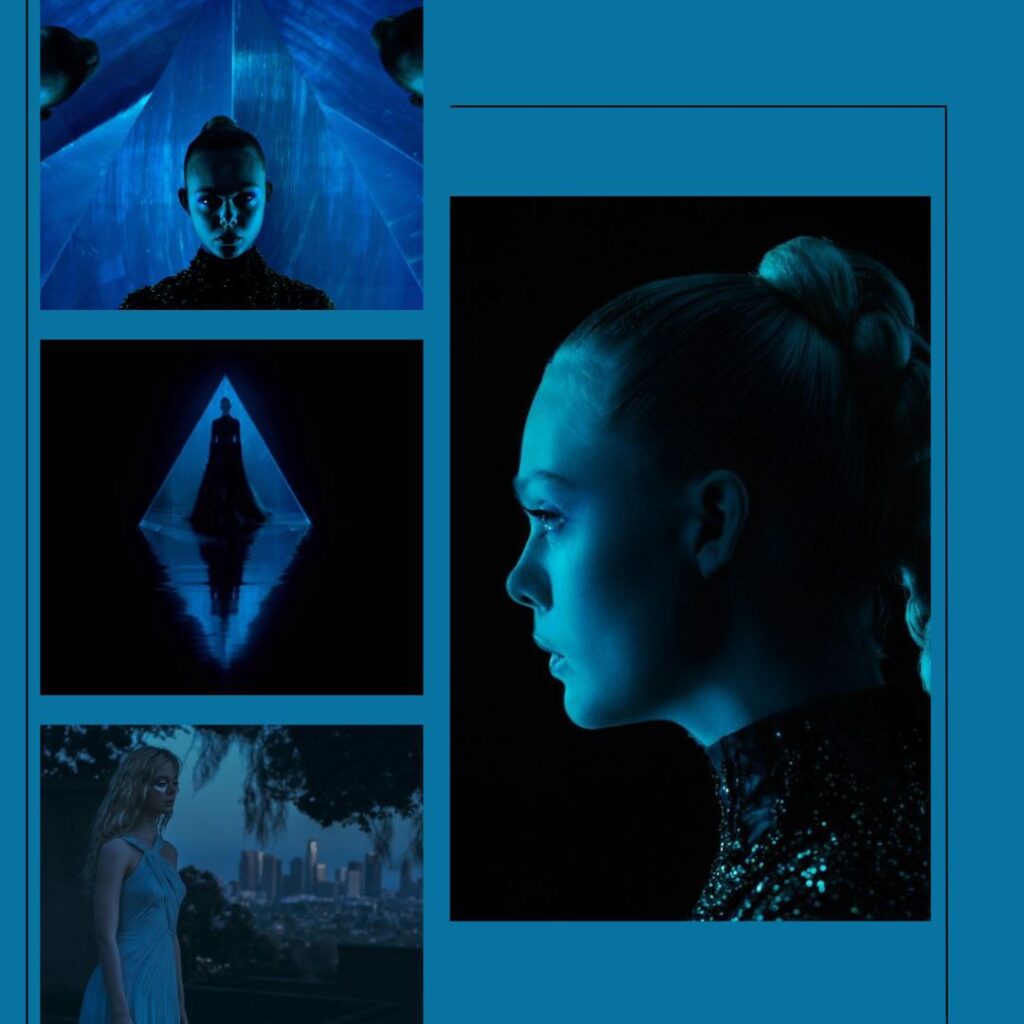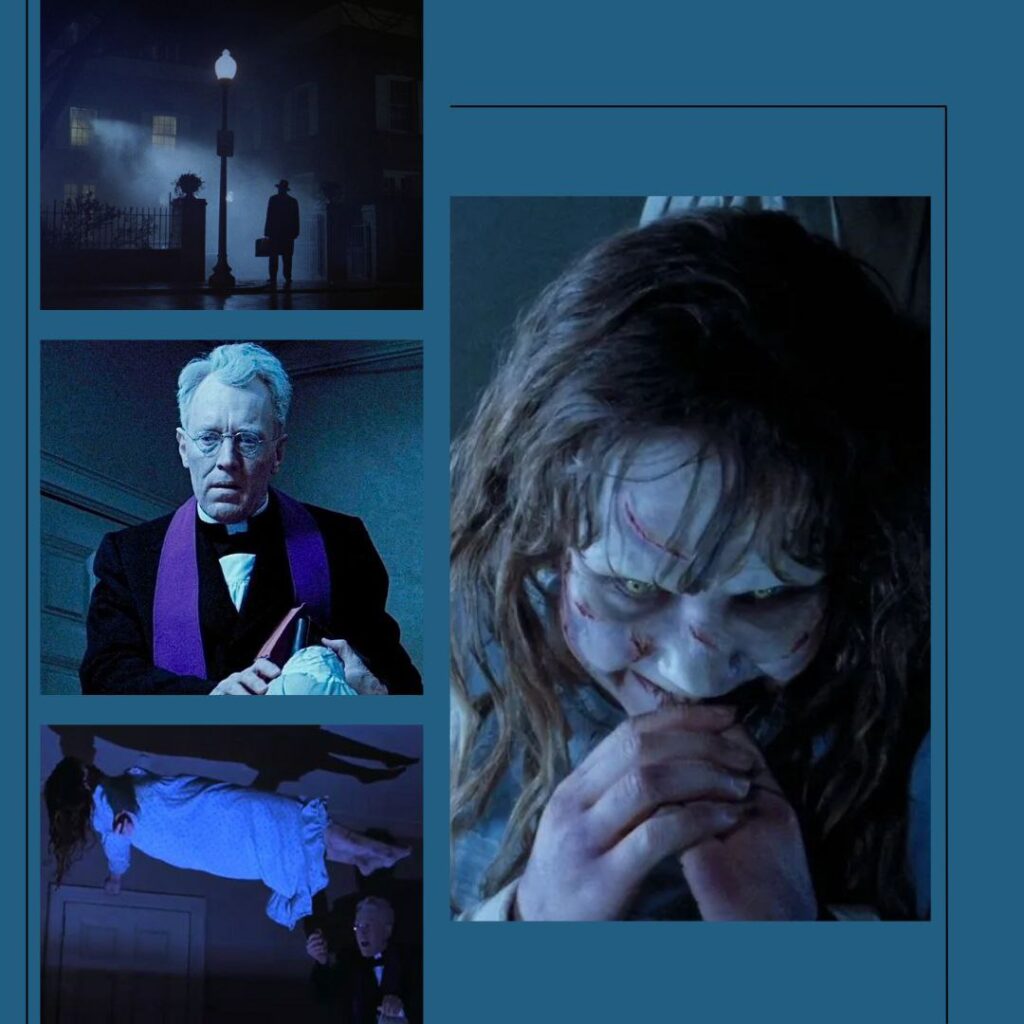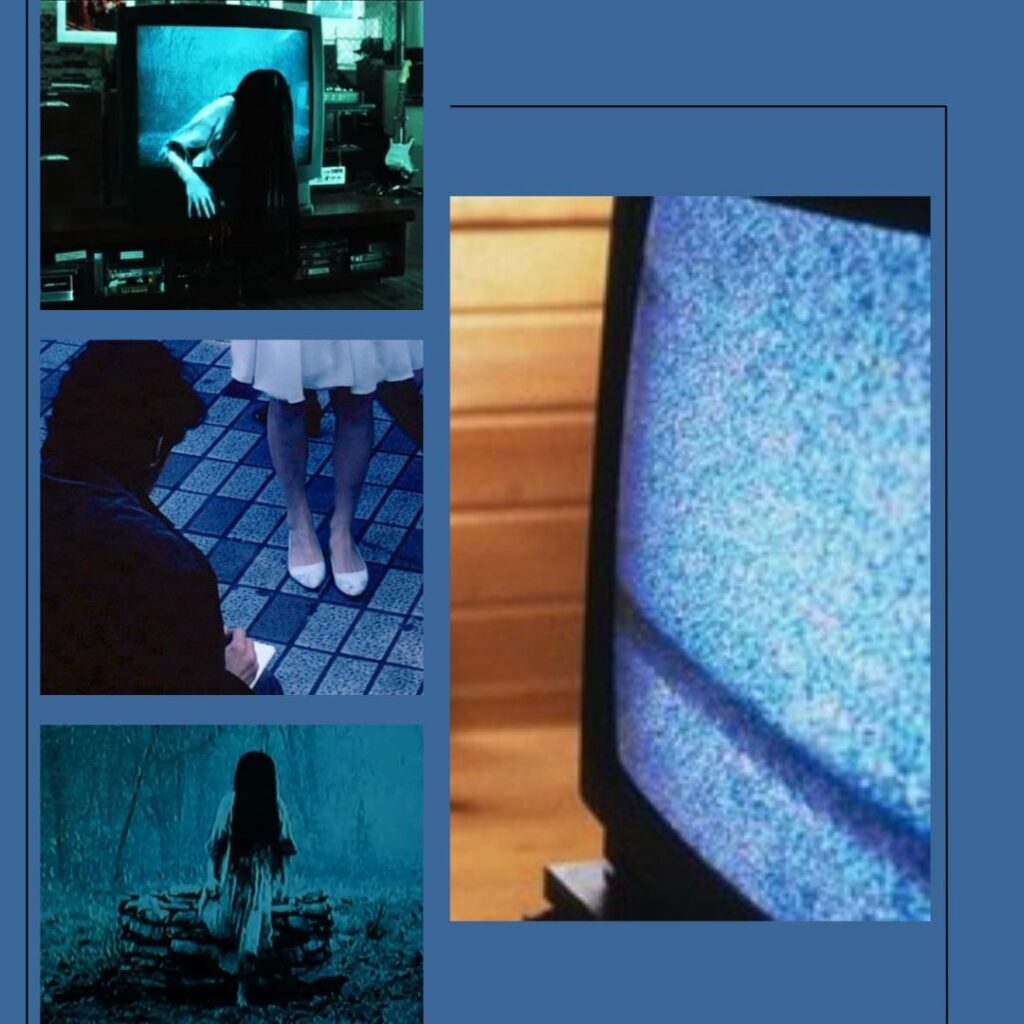“I have a blue house, with a blue window…”
You already know where we’re going with this.
Today on Colors From DarkWorlds, we’re talking about blue — and its colder cousin, light blue. Unlike the fiery energy of red or the consuming black void, blue in horror is quiet. It doesn’t scream — it lingers. It freezes. It haunts.
Blue might not always be the color of blood, but it’s often the color of what’s left behind after it’s spilled.
Coldness and Isolation

Blue is the color of ice, snow, and everything frozen in time.
In John Carpenter’s The Thing, the eternal blue of Antarctic ice and sky isn’t just a backdrop — it’s a prison. That blinding cold builds an atmosphere of isolation, where the horror is as much about being cut off from the world as it is about the monster itself.
In 30 Days of Night, the cold blue filter enhances the feeling of endless winter. It’s a visual death sentence — no sun, no hope, no way out. The blue tones aren’t just about temperature. They’re about emotional frostbite — numbness, dread, and inevitability.
Melancholy and Emotional Dread
In English, we say “feeling blue” for a reason.
Blue in horror often signals grief, depression, and spiritual fatigue. It’s the color of long nights, empty beds, and too-quiet houses.
In The Babadook, the entire film is drenched in cool blues and pale grays, reinforcing the central metaphor of depression. It surrounds the characters like a fog — constant, inescapable, and quietly crushing. The Babadook himself might be black, but he lives in a world built out of blue.
Blue doesn’t lash out like red — it sinks in slowly. It represents emotional numbness and the absence of joy, a palette of quiet despair.
Spirits, Demons, and the Uncanny

Red demons burn with rage. Blue ones just stare into your soul.
While horror often leans into red for monsters and hellfire, blue brings something more alien — cold, unfamiliar, and unfeeling. A blue ghost doesn’t need to scream. It just watches, waiting in the static.
Take The Ring. That TV glow? Eerie, ghostly blue. The tape? Washed in cold light. When Samara (or Sadako in the original Ringu) crawls out of the screen, it’s not just the action that chills you — it’s that blue light, detached from reality, like something seeping through the veil.
Blue is the color of the uncanny. Of things that should not be.
Depth, Drowning, and the Unknown
Blue is also the color of deep water — and deep fear.
It’s the ocean at night. The sky before a storm. That endless drop when the flashlight beam disappears.
In movies like 47 Meters Down or Deep Blue Sea, blue is suffocating. The deeper the water, the darker the shade — and the closer to death. It symbolizes being cut off from the surface, from air, from clarity. It’s not just claustrophobia — it’s existential.

Blue in these films isn’t just water. It’s the loss of direction, the silence of drowning, the terror of something brushing your foot in the dark.
Final Thoughts: Blue Doesn’t Bleed — It Freezes
In horror, blue is a trap. It lulls you with quiet, distant beauty — and then it isolates, smothers, and numbs. It’s the color of monsters who don’t need to growl, just exist. It’s sadness in visual form. Loneliness without a cure. Fear that chills instead of burns.
So the next time the world turns cold and quiet onscreen…
watch out.
Something blue is coming.
